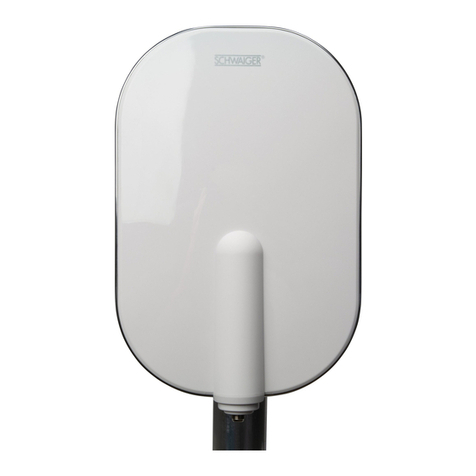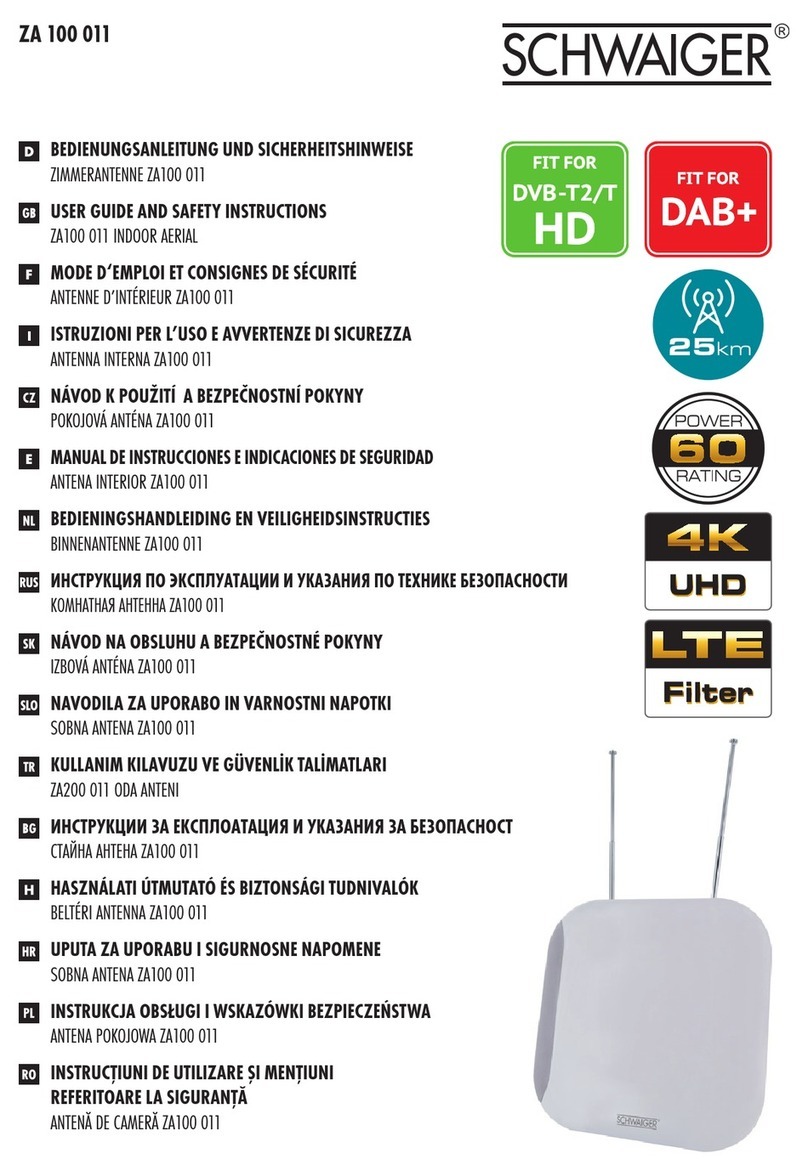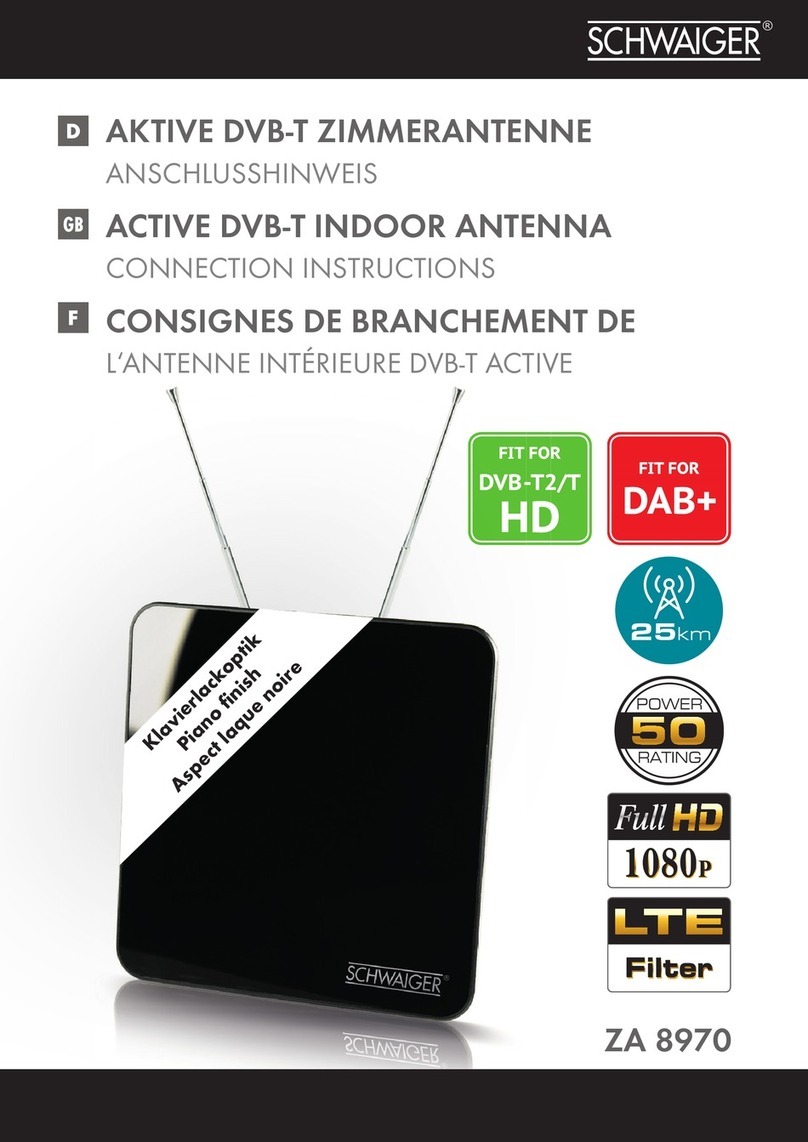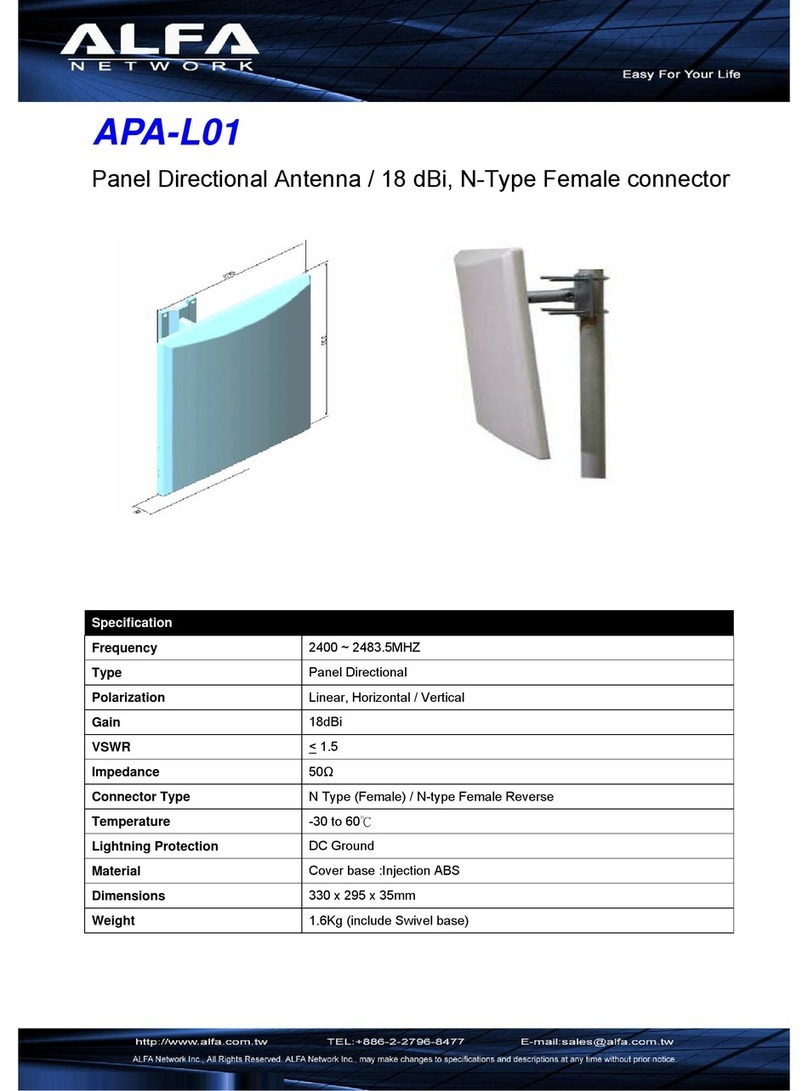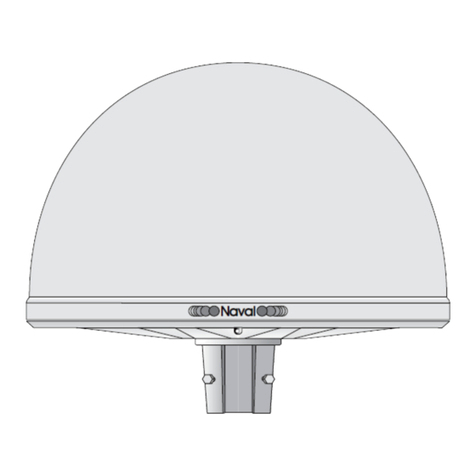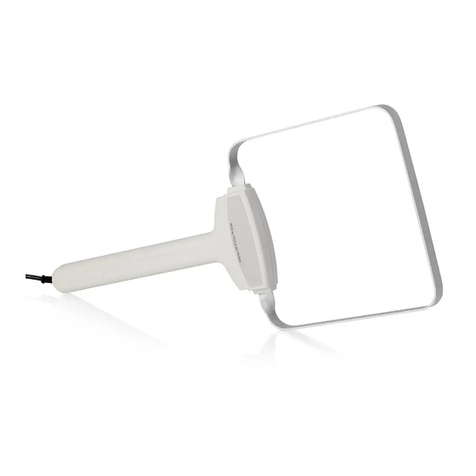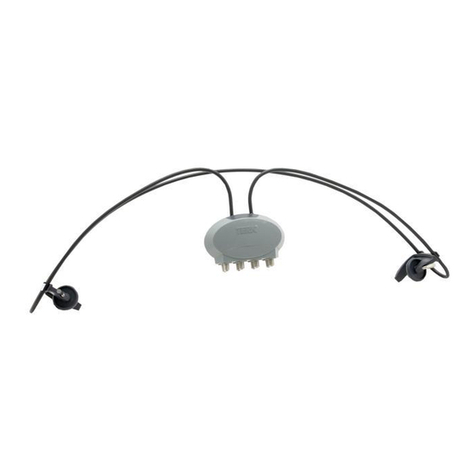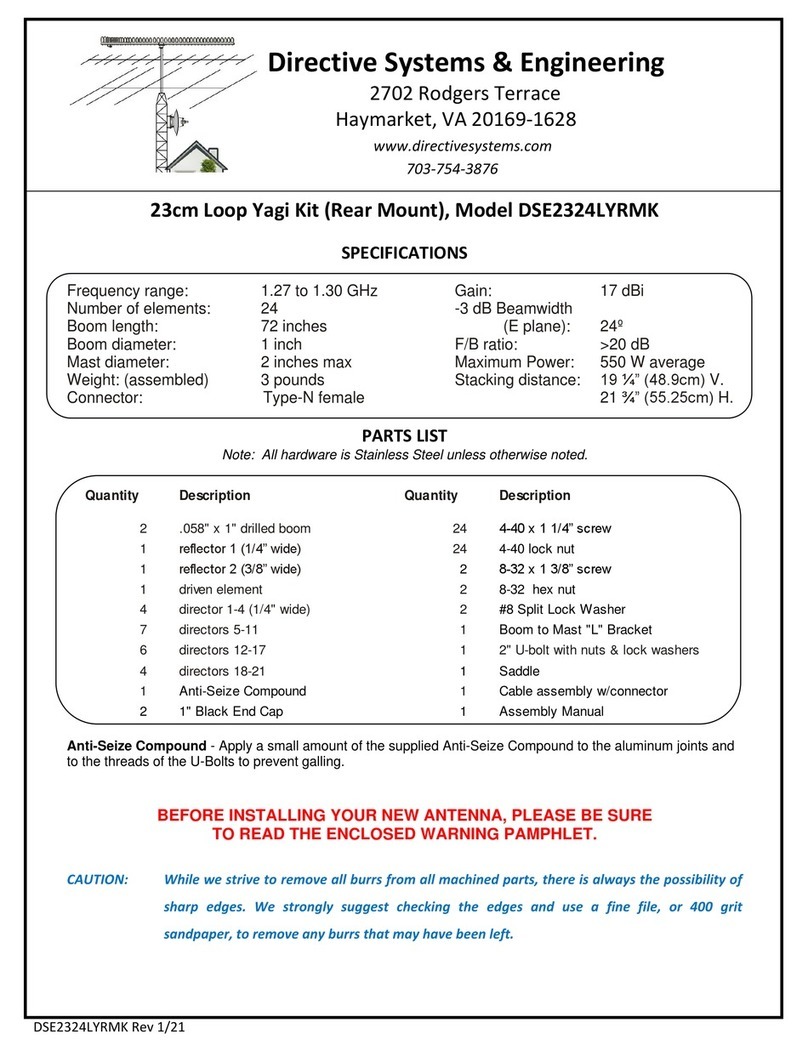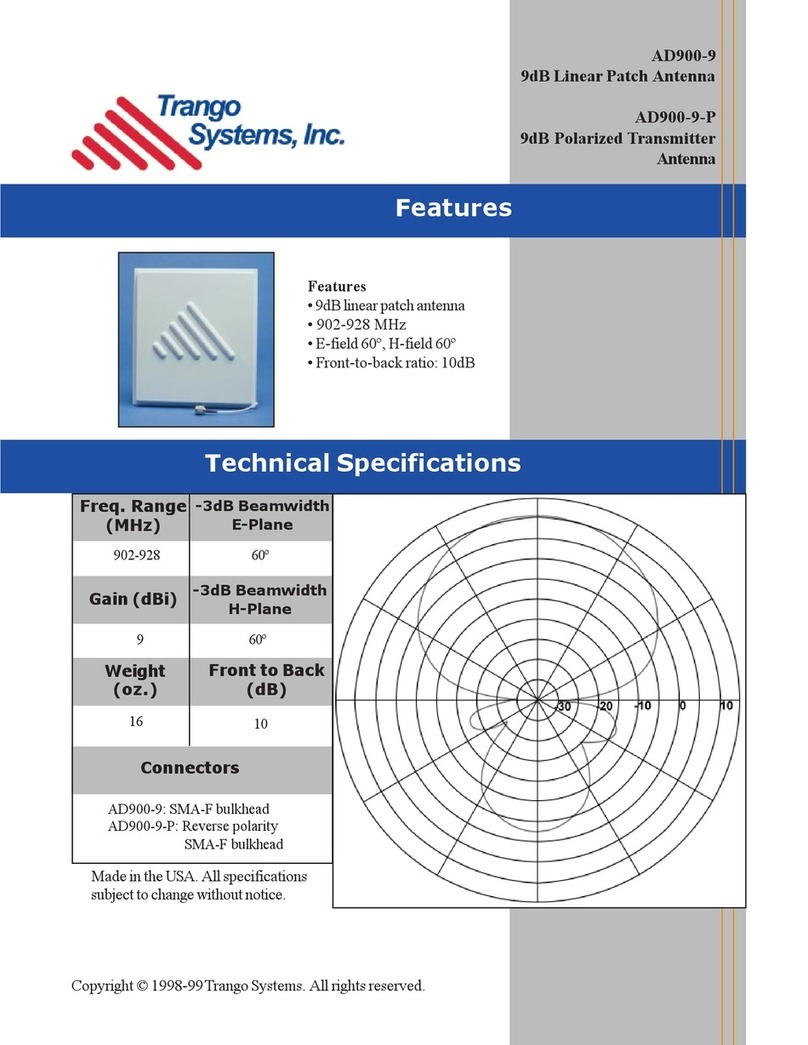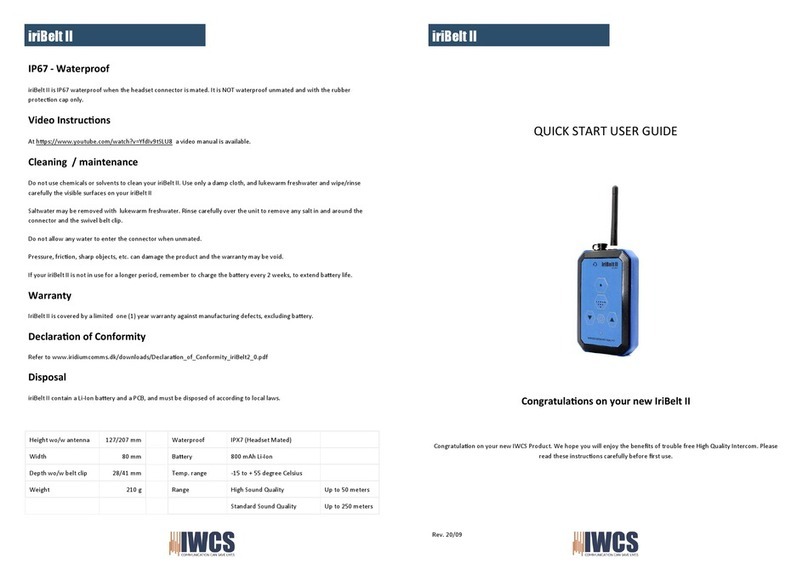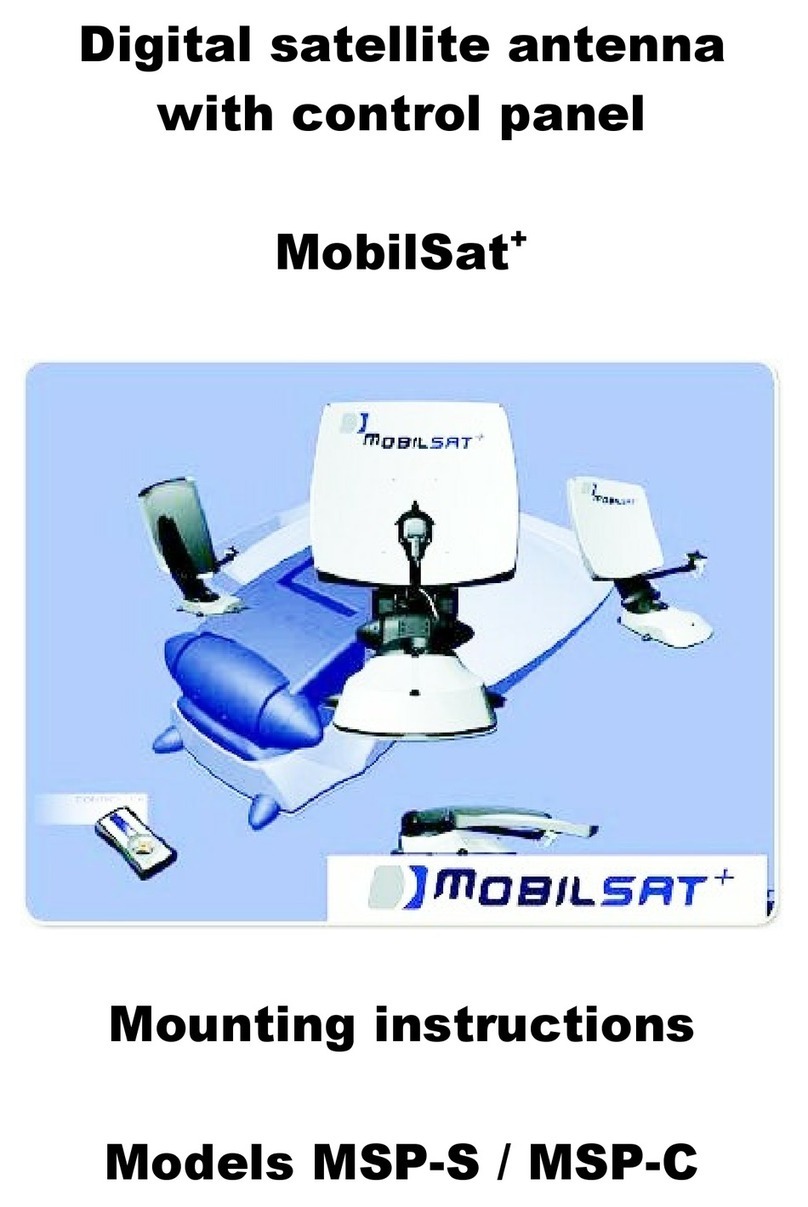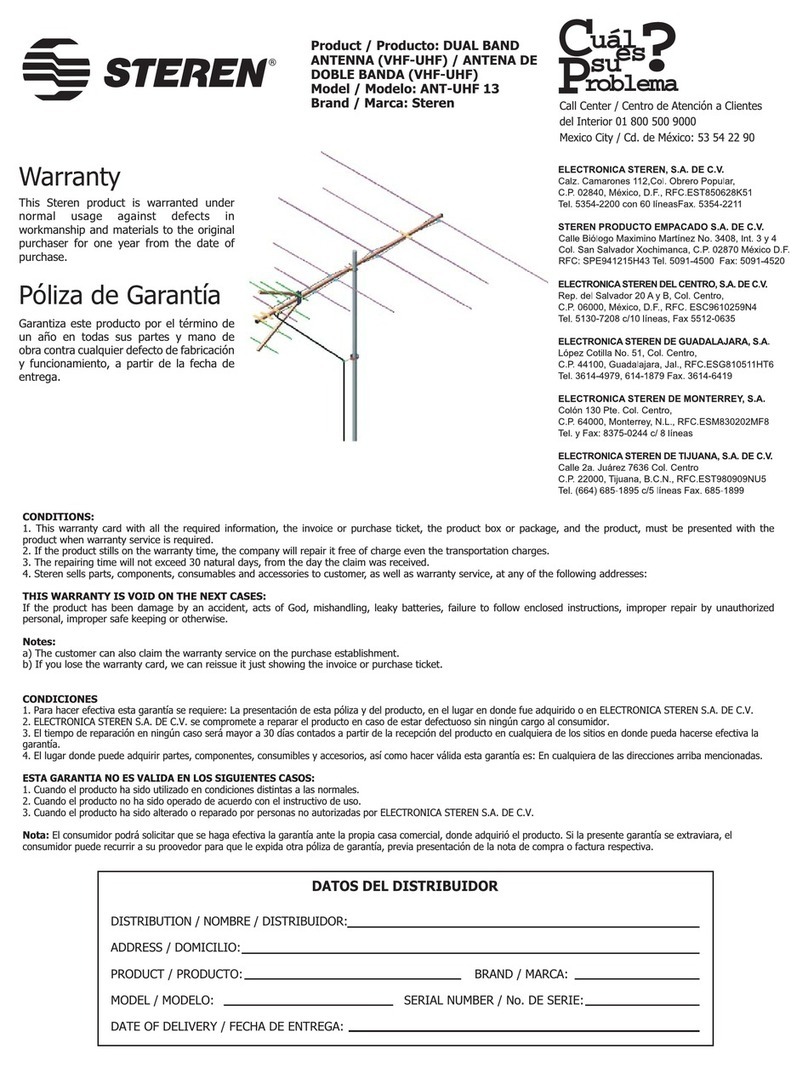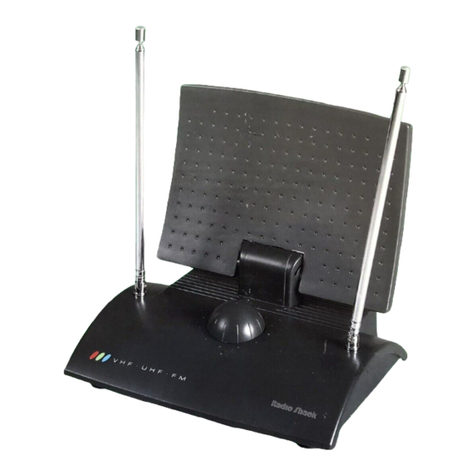
BEDIENUNGSANLEITUNG
4
ANSCHLUSSBEISPIEL (LINKS) ANSCHLUSSBEISPIEL (RECHTS)
Stromversorgung über den eingebauten
DVB-T/T2 Receiver im TV-Gerät Stromversorgung über das
mitgelieferte externe Netzteil
1. Stellen Sie sicher, dass das Fernsehgerät ausgeschaltet
ist.
1. Stellen Sie sicher, dass das Fernsehgerät ausgeschaltet
ist.
2. Verbinden Sie das Koaxialkabel der Zimmerantenne
mit dem Antennenanschluss Ihres Fernsehgerätes.
2. Verbinden Sie das Koaxialkabel der Zimmerantenne
mit dem Antennenanschluss Ihres Fernsehgerätes .
3. Schalten Sie im Menü ihres TV-Gerätes die 5 V Strom-
versorgung ein, um die Zimmerantenne über das
Koaxialkabel mit Spannung zu versorgen.
3. Stecken Sie nun das Kabel des Netzteils in die
5 V Buchse der Zimmerantenne sowie den Netz-
stecker in eine 230 V Steckdose.
4. Nun können Sie das Fernsehgerät einschalten und
nach empfangbaren Programmen suchen.
4. Stellen Sie sicher, dass im Menü Ihres TV-Gerätes die
5 V Stromversorgung deaktiviert ist.
5. Nun können Sie das Fernsehgerät einschalten und
nach empfangbaren Programmen suchen.
ANSCHLIESSEN DER ZIMMERANTENNE FÜR TV-GERÄTE
OHNE INTEGRIERTEM DVB-T/T2 RECEIVER
Anschlussbeispiel (LINKS) Anschlussbeispiel (RECHTS)
DVB-T2 Zimmerantenne,
aktiv
TV
Externes Netzteil
ODER
ANSCHLUSSBEISPIEL (LINKS) ANSCHLUSSBEISPIEL (RECHTS)
Stromversorgung über den externen
DVB-T/T2 Receiver Stromversorgung über das
mitgelieferte externe Netzteil
1. Stellen Sie sicher, dass der Receiver ausgeschaltet ist. 1. Stellen Sie sicher, dass der Receiver ausgeschaltet ist.
2. Verbinden Sie das Koaxialkabel der Zimmerantenne
mit dem Antennenanschluss Ihres Receivers.
2. Verbinden Sie das Koaxialkabel der Zimmerantenne
mit dem Antennenanschluss Ihres Receivers.
3. Schalten Sie im Menü Ihres Receiver die 5 V Stromver-
sorgung ein, um die Zimmerantenne über das Koaxial-
kabel mit Spannung zu versorgen.
3. Stecken Sie nun das Kabel des Netzteils in die
5 V Buchse der Zimmerantenne sowie den Netz-
stecker in eine 230 V Steckdose.
4. Nun können Sie den Receiver einschalten und nach
empfangbaren Programmen suchen.
4. Stellen Sie sicher, dass im Menü Ihres Receivers die
5 V Stromversorgung deaktiviert ist.
5. Nun können Sie das Receiver einschalten und nach
empfangbaren Programmen suchen.
